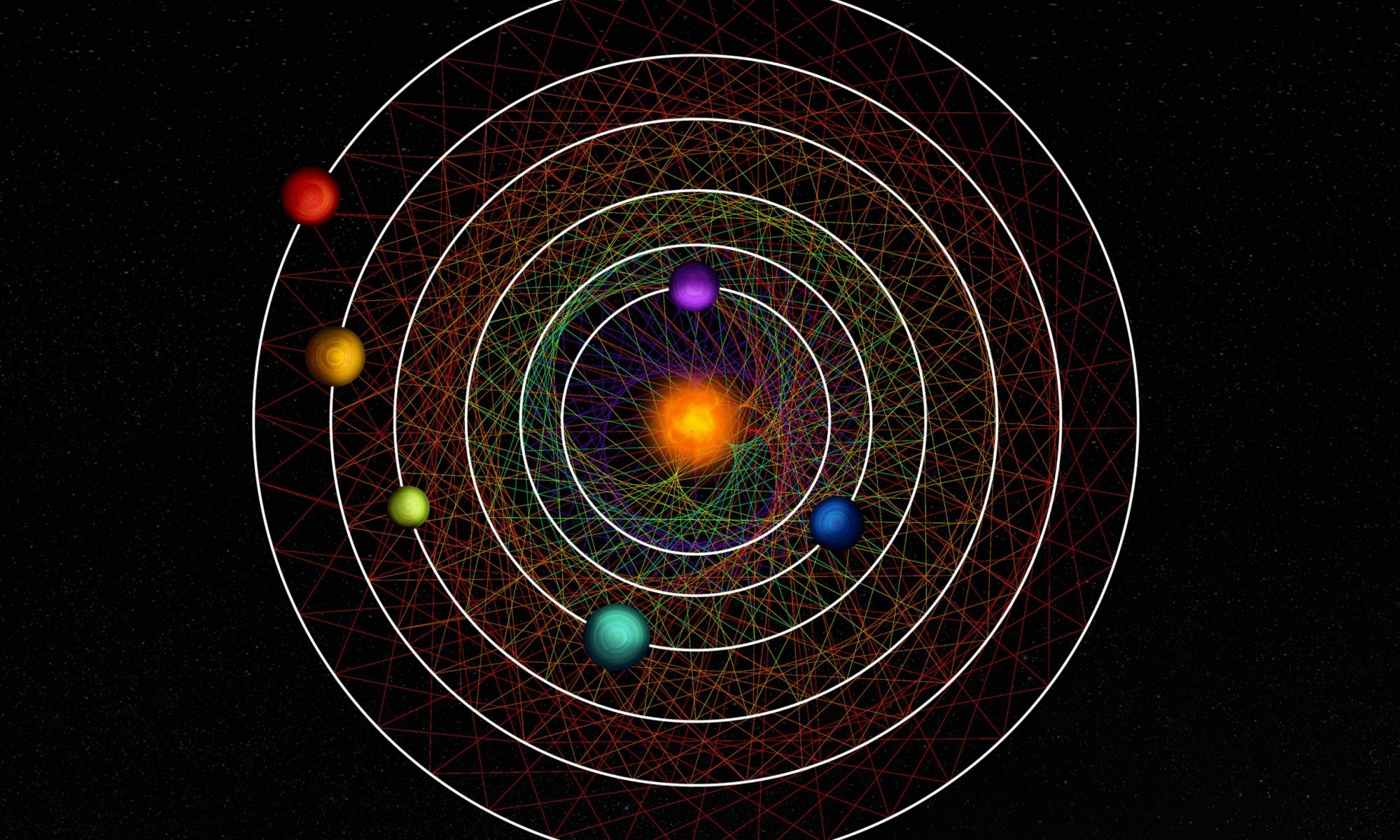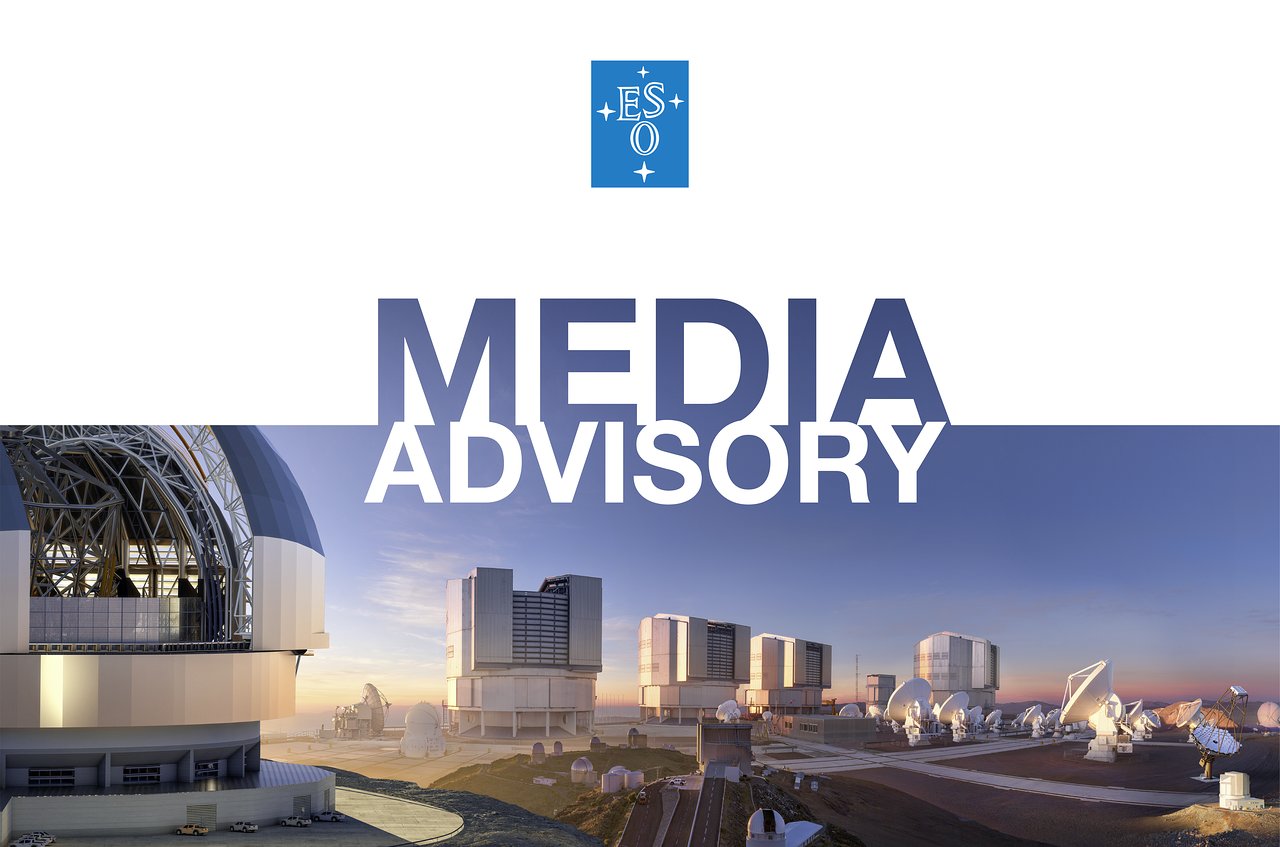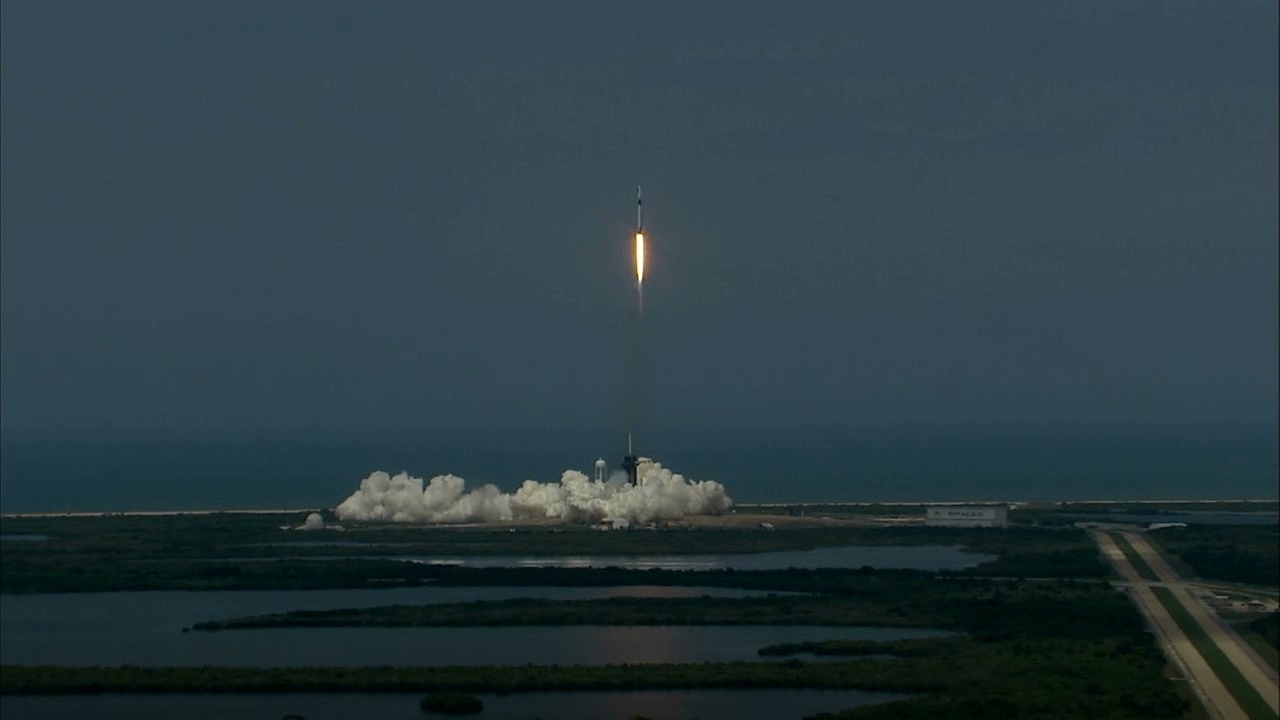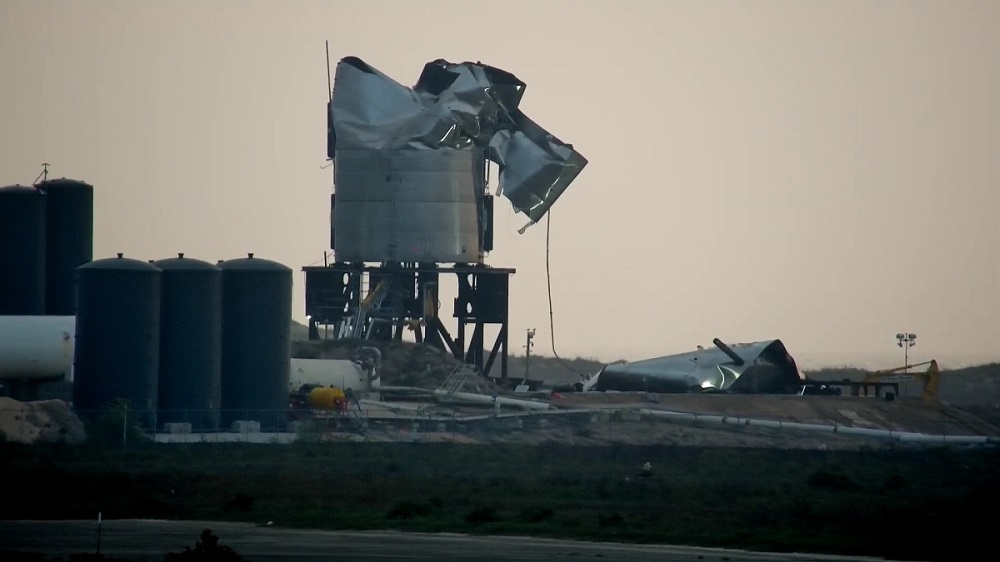A team of researchers led by University of Chicago astronomer Rafael Luque analyzed data acquired by both NASA’s Transiting Exoplanet Survey Satellite (TESS) and ESA’s CHaracterising ExOPlanet Satellite (Cheops) and found a unique planetary system. Orbiting a star cataloged as HD110067, this system contains six sub-Neptune planets. Incredibly, all six planets are orbiting in direct resonance with each other. The results of the work were published on November 29 in Nature.
Continue reading “A Planetary System With Six Sub-Neptunes Locked in Perfect Resonance”This is it! On May 12th we’ll see the Event Horizon Telescope’s Image of the Milky Way’s Supermassive Black Hole
In April of 2019, the international astronomical consortium known as the Event Horizon Telescope (EHT) made headlines worldwide when it announced the first-ever image of a black hole. Specifically, the image showed the glowing disk surrounding the supermassive black hole (SMBH) at the center of the M87 galaxy. In 2021, they followed up on this by acquiring an image of the core region of the Centaurus A galaxy and the radio jet emanating from it.
But in what is sure to be the most exciting announcement yet, the European Southern Observatory (ESO) and researchers from the EHT will announce the results of their survey that examined the SMBH at the center of our very own Milky Way Galaxy – Sagittarius A*! The results will be shared as part of a press conference on Thursday, May 12th, starting at 03:00 PM CEST (08:00 EDT; 05:00 PDT). The event will take place at the ESO Headquarters in Munich, Germany, and live-streamed via an ESO webcast.
Continue reading “This is it! On May 12th we’ll see the Event Horizon Telescope’s Image of the Milky Way’s Supermassive Black Hole”“Irresponsible” Russian Anti-Satellite Test Creates Orbital Debris Field, Endangering the Space Station and Crew
Early Monday, November 15, 2021, the International Space Station Flight Control team in Houston told the crew that due to a to satellite breakup, a debris field was created near the station’s orbital path. The astronauts and cosmonauts were told to “shelter in place” on board the Soyuz and SpaceX capsules attached to the ISS.
What became apparent as the day wore on is that the debris field was the result of a “destructive” test by Russia of an anti-satellite missile system against one of their own satellites. Experts from the US Space Command say the test resulted in “over fifteen hundred pieces of trackable orbital debris” which could stay in orbit for several years.
Continue reading ““Irresponsible” Russian Anti-Satellite Test Creates Orbital Debris Field, Endangering the Space Station and Crew”NASA and SpaceX Make History with Successful Crew Dragon Launch!
Today, on Saturday, May 30th, NASA and SpaceX successfully launched the Crew Dragon to space with two astronauts for the first time. Far from just a demonstration, this launch signaled the restoration of domestic launch capability to US soil! From this day forward, NASA astronauts will no longer be dependent on foreign launch providers (like Roscosmos) to send astronauts to the International Space Station (ISS).
Continue reading “NASA and SpaceX Make History with Successful Crew Dragon Launch!”SN4, We Hardly Knew You. Another Starship Prototype Lost!
Earlier today (Friday, May 29th), at 01:49 p.m. local time (02:49 p.m. EDT; 11:49 PDT), SpaceX Starship prototype (SN4) exploded on the company’s test pad near Boca Chica, Texas. The explosion occurred two minutes after ground crews commenced a static fire test of its Raptor engine. This test was intended to test the Raptor and the Starship design once more in preparation for a major milestone – a 150 m (500 ft) hop test – this summer.
Continue reading “SN4, We Hardly Knew You. Another Starship Prototype Lost!”Now This is Progress! Starship Passes its Cryogenic Test and Doesn’t Explode
This weekend, SpaceX’s fourth Starship prototype (SN4) achieved a major milestone by passing the crucial cryogenic load test. This consisted of the prototype’s liquid oxygen and liquid methane tanks being filled with liquid nitrogen to see how they hold up when fully-pressurized. This test was vital since the three previous prototypes suffered structural failures and were lost during this exact same procedure.
Continue reading “Now This is Progress! Starship Passes its Cryogenic Test and Doesn’t Explode”SpaceX’s Third Starship Prototype Collapsed Last Night
Top Image Credit: LabPadre w/ Maria Pointer
SpaceX just cannot catch a break! Last night, during the same cryogenic proof test that killed the previous two prototypes, SpaceX’s SN3 prototype experienced a structural failure. On-site video footage provided by famed NASASpaceFlight member BocaChicaGal shows the SN3 experiencing what appears to be a leak, followed by the fuselage collapsing.
Continue reading “SpaceX’s Third Starship Prototype Collapsed Last Night”Space Force Uniforms are Perfectly Camouflaged for a Forest Moon
The United States Space Force has given us a look at their new uniforms, and critics are savaging them on Twitter and elsewhere. That’s because the new uniforms are camouflage.
Continue reading “Space Force Uniforms are Perfectly Camouflaged for a Forest Moon”First Free Flight of SpaceX’s Starhopper Aborted After Engine Fire
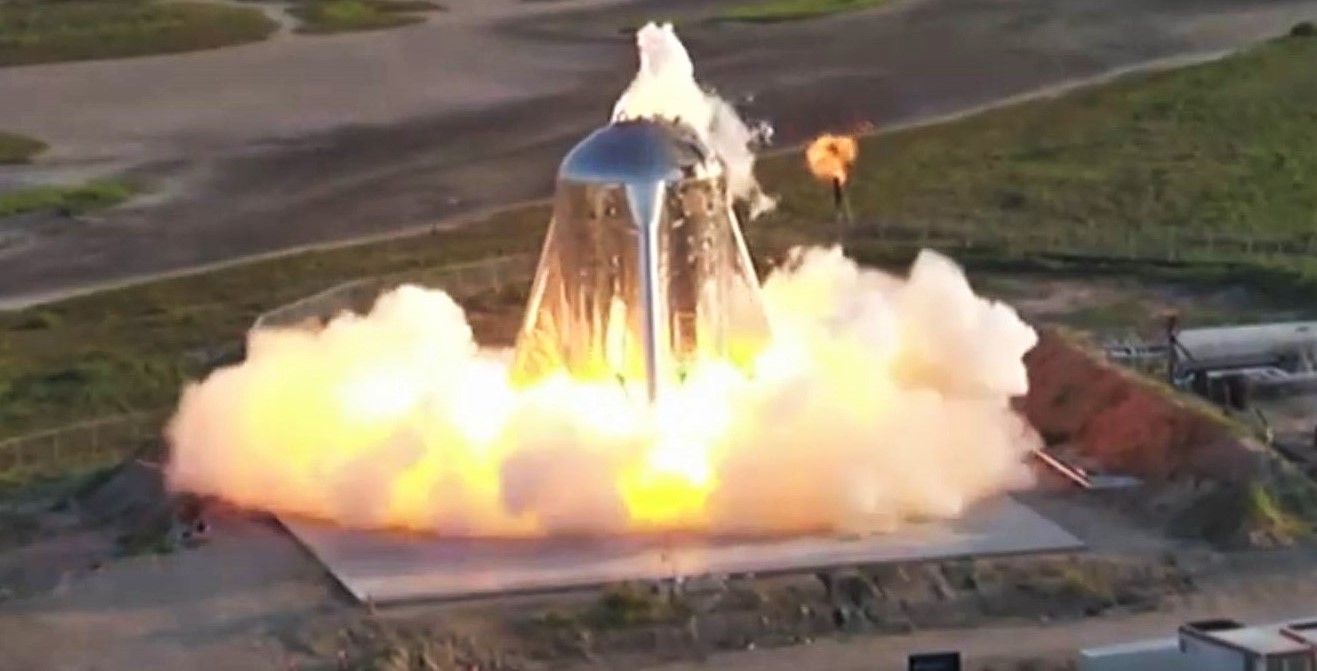
Yesterday, on Wednesday, July 24th, the prototype test vehicle for the Starship (the Starhopper) commenced its first untethered “hop test” at the company’s test facility in Boca Chica, Texas. This test is an important milestone for SpaceX, intended to validate the Raptor engine in free flight and bring the company one step closer to creating the super-heavy launch system that will allow for trips to the Moon and Mars.
Unfortunately, the ground team was forced to abort the test due to a fire that began shortly after engine ignition. This comes shortly after a static fire test that took place last Tuesday, July 16th where the newly-installed Raptor engine erupted in a sudden and unexpected fireball. Though no damage appears to have been caused (again, thankfully!), this latest flare-up represents another technical glitch and another delay for the Starship.
Continue reading “First Free Flight of SpaceX’s Starhopper Aborted After Engine Fire”Stare Down from Space into the Churning Maw of Hurricane Florence
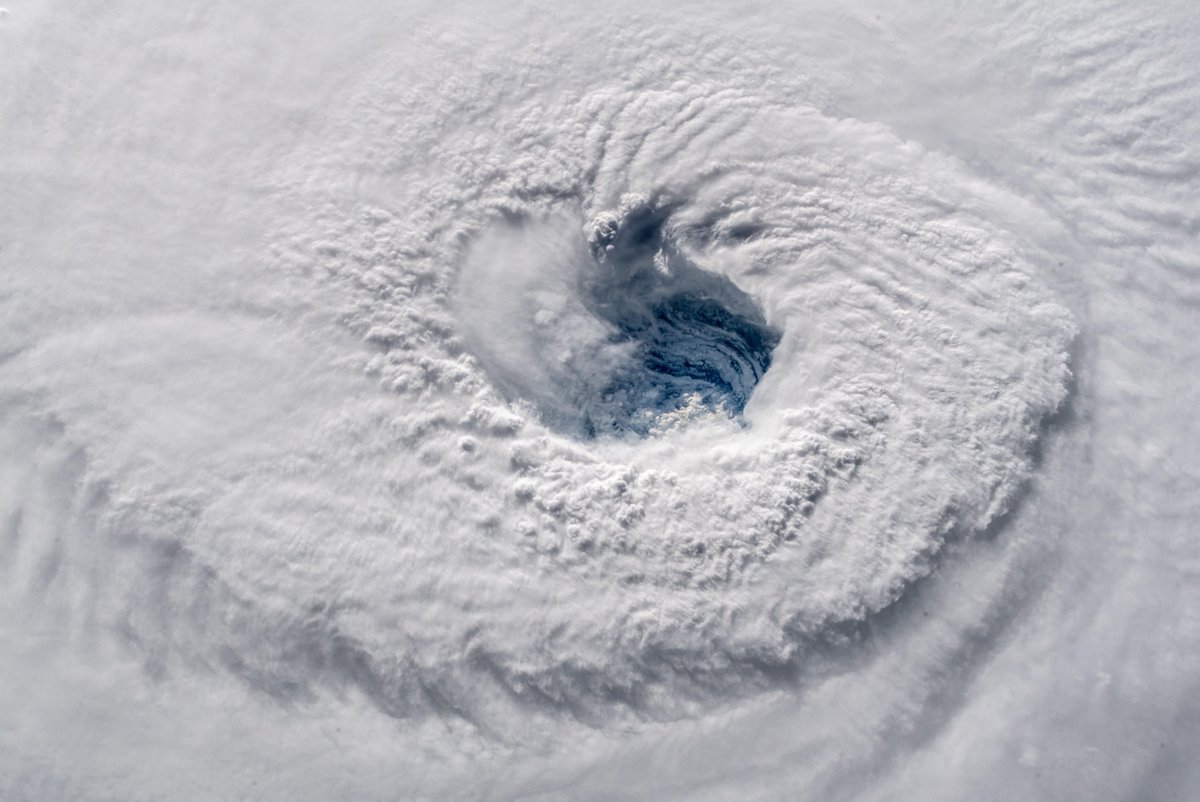
Even if you know nothing about hurricanes, an unavoidable sense of doom and destruction overtakes you when you look at this image of Hurricane Florence as it moves inexorably toward North and South Carolina.
Even if you didn’t know that the powerful storm is forecast to gain strength as it hits the coast on Friday, or that it will dump several months of rain onto the region in a mere few days, or that the storm surge could reach as high as 9 to 13 ft. If you didn’t know all those things, the picture of Florence taken from space would still fill you with foreboding.
Continue reading “Stare Down from Space into the Churning Maw of Hurricane Florence”

